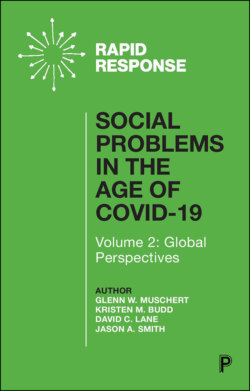Читать книгу Social Problems in the Age of COVID-19 Vol 2 - Группа авторов - Страница 14
На сайте Литреса книга снята с продажи.
Engage in Collaborations with Other Organizations
ОглавлениеIn addition, human trafficking organizations can work together to creatively make use of their limited resources. For example, these organizations can benefit from increased collaboration with other organizations with similar missions. Existing studies indicate that engaging in collaborations can help to increase the effectiveness of nonprofit and human service organizations, and of human trafficking agencies specifically, and can manifest in two ways: internal collaborations (collaborations between individuals involved in a single organization) and external collaborations (individuals from different organizations working together). Such collaborations could involve multiple organizations coming together virtually to organize and participate in training programs, identifying ways that current volunteers could get involved in new tasks within their organization, and organizational specialization. With specialization, each organization working to address human trafficking could choose a few areas in which to specialize rather than try to address all needs of survivors. While the exact specialty or specialties will depend on the organization’s strengths and available resources, some examples of specialization include focusing specifically on child survivors, on a particular type of trafficking such as sex trafficking or forced labor, or on providing a certain type of service for survivors such as housing. Organizations could then refer clients to one another, allowing each organization to focus primarily on its areas of specialization. Such collaborations have also been shown to build positive relationships and networks among organizations and the individuals working in them, as well as to allow for the sharing of knowledge. All of these outcomes have in turn been shown to increase organizational effectiveness due to the collaborations and division of labor.
Some organizations have already engaged in new collaborations due to the pandemic, such as the United States Department of Justice, the United States Department of Homeland Security, and the Polaris Project. During the summer of 2020, these organizations worked together to facilitate online training courses for communities to better understand the warning signs and risk factors of human trafficking, as well as steps that can be taken to prevent trafficking from occurring. Solutions such as this can and should continue even after the COVID-19 pandemic ends, as virtual training opportunities may be more accessible to some than in-person trainings. Training should also focus on ways that the pandemic has increased risk factors of human trafficking and, once the pandemic has ended, can continue to be tailored to address how human trafficking is impacted by current societal issues.
